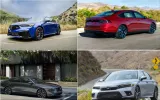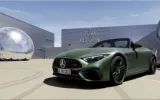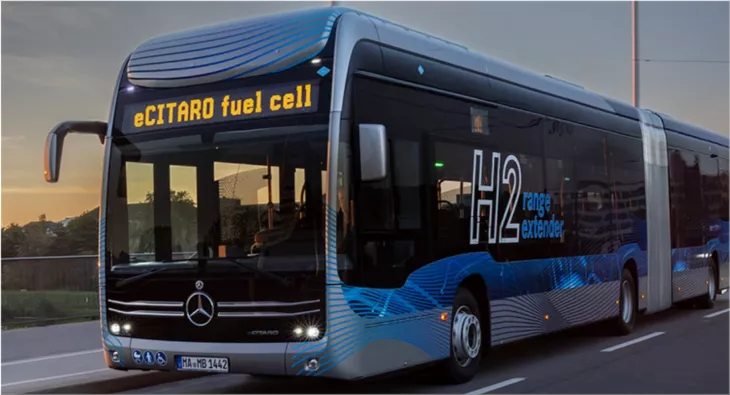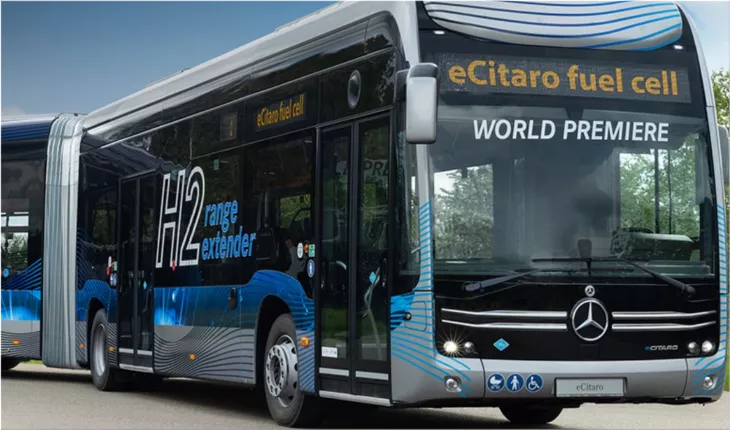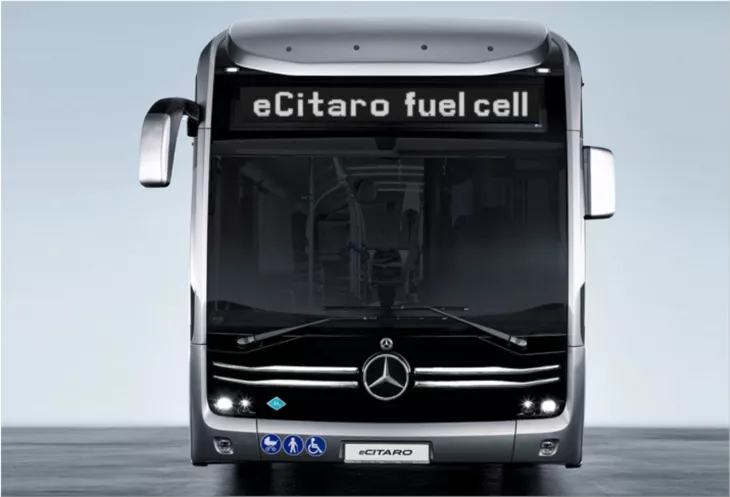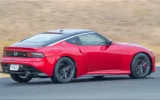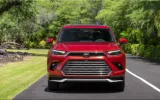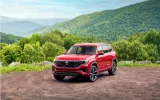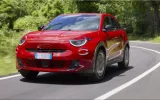The Mercedes-Benz eCitaro fuel cell is a fully electric low-floor bus that combines battery power with a hydrogen fuel cell to extend its range. It has recently won two prestigious awards in Spain: the Bus of the Year and the Ecological Bus of the Year. These awards recognize the eCitaro fuel cell as a sustainable and efficient solution for urban mobility, with a range of up to 400 km without recharging. We will explore this innovative bus's features, benefits, and challenges, and how it fits into the broader vision of Mercedes-Benz and Daimler Buses for a carbon-neutral future.
What is the eCitaro fuel cell and how does it work?
The eCitaro fuel cell is based on the eCitaro, the first fully electric city bus from Mercedes-Benz, which was launched in 2018. The eCitaro uses lithium-ion batteries to store and supply energy to the electric motors that drive the wheels. The batteries can be recharged at the depot or at intermediate stops using plug-in or pantograph systems. The eCitaro can cover most urban routes with its battery capacity, but some longer or more demanding routes may require more frequent or longer charging times.
To address this challenge, Mercedes-Benz developed the eCitaro fuel cell, which adds a fuel cell system as a range extender to the battery-electric drive. The fuel cell system consists of two modules, each with 120 fuel cells, that are mounted on the roof of the bus. The fuel cells use hydrogen as fuel and oxygen from the air to generate electricity through an electrochemical reaction. The only by-product of this process is water vapor, making the eCitaro fuel cell a zero-emission vehicle. The electricity from the fuel cells is used to recharge the batteries while the bus is in motion, extending the range of the bus by up to 300 km. The hydrogen is stored in ten tanks, also on the roof, with a total capacity of 38.5 kg. The hydrogen can be refilled at a hydrogen station in less than 10 minutes.
The Mercedes-Benz eCitaro fuel cell has a total battery capacity of 441 kWh, of which 396 kWh are usable. The batteries are divided into seven modules, four on the roof and three in the rear. The batteries are of the latest generation from Mercedes-Benz, with a higher energy density and durability than the previous ones. The batteries are also thermally controlled to ensure optimal performance and longevity. The eCitaro fuel cell has a peak output of 300 kW and a continuous output of 200 kW. It can carry up to 88 passengers in the solo bus and up to 128 passengers in the articulated bus.
What are the advantages and disadvantages of the eCitaro fuel cell?
The eCitaro fuel cell offers several advantages over conventional diesel buses or battery-only electric buses. Some of these advantages are:
- It is environmentally friendly, as it does not emit any harmful gases or particles, and reduces the carbon footprint of public transport. According to Mercedes-Benz, the eCitaro fuel cell can save up to 185 tons of CO2 per year compared to a diesel bus. The eCitaro fuel cell also uses renewable energy sources, such as green hydrogen produced from wind or solar power, or surplus electricity from the grid.
- It is economical, as it has lower operating and maintenance costs than diesel buses, and does not depend on volatile fuel prices. The eCitaro fuel cell also has a high efficiency of around 50%, compared to around 40% for diesel buses or 30% for battery-only electric buses. The eCitaro fuel cell also has a long service life of up to 20 years or 1.2 million km.
- It is flexible, as it can cover almost any urban route without the need for intermediate charging or additional infrastructure. The eCitaro fuel cell can also adapt to different weather conditions and topographies, as the fuel cell system can provide more or less power depending on the energy demand. The eCitaro fuel cell can also recover energy through regenerative braking, further increasing its range and efficiency.
- It is comfortable, as it offers a smooth and quiet ride for both passengers and drivers. The eCitaro fuel cell has a low noise level of around 60 dB inside the bus, compared to around 80 dB for diesel buses. The eCitaro fuel cell also has a low vibration level, as the electric motors are mounted on the axles and the fuel cell system is isolated from the chassis. The eCitaro fuel cell also has a spacious and modern interior, with air conditioning, LED lighting, USB ports, and digital displays.
However, the eCitaro fuel cell also faces some challenges and limitations, such as:
- It is expensive, as it has a higher initial purchase price than diesel buses or battery-only electric buses. The eCitaro fuel cell costs around $1.2 million for the solo bus and around $1.5 million for the articulated bus, compared to around $500,000 for a diesel bus or around $800,000 for a battery-only electric bus. The eCitaro fuel cell also requires a hydrogen supply infrastructure, which is still scarce and costly in many regions. The eCitaro fuel cell also consumes more electricity than a battery-only electric bus, as the fuel cell system has some energy losses.
- It is complex, as it involves a hybrid system of batteries and fuel cells, requiring more technical expertise and safety measures than a diesel or battery-only electric bus. The eCitaro fuel cell also has more components and connections than a diesel or battery-only electric bus, which increases the risk of malfunctions or leaks. The eCitaro fuel cell must also comply with strict regulations and standards for hydrogen vehicles, which may vary from country to country.
- It depends on the availability and quality of hydrogen and electricity, which may not be guaranteed or consistent in some regions. The eCitaro fuel cell also depends on the environmental impact of hydrogen and electricity production, which may not be carbon-neutral or sustainable in some cases. The eCitaro fuel cell also depends on the public acceptance and awareness of hydrogen technology, which may not be high or positive in some markets.
How does the eCitaro fuel cell fit into the vision of Mercedes-Benz and Daimler Buses?
The eCitaro fuel cell is part of the electromobility strategy of Mercedes-Benz and Daimler Buses, which aims to offer a comprehensive portfolio of electric buses for different customer needs and market conditions. The eCitaro fuel cell is the third variant of the eCitaro family, after the eCitaro with plug-in charging and the eCitaro G with solid-state batteries. The eCitaro fuel cell is designed to complement the other variants, not to replace them, as each variant has its own strengths and weaknesses. The eCitaro fuel cell is ideal for long-distance routes with high passenger capacity, while the eCitaro with plug-in charging is suitable for short-distance routes with frequent stops, and the eCitaro G with solid-state batteries is optimal for medium-distance routes with moderate passenger capacity.
The eCitaro fuel cell is also part of the sustainability vision of Mercedes-Benz and Daimler Buses, which aims to achieve carbon neutrality by 2039. The eCitaro fuel cell contributes to this vision by reducing the local emissions and carbon footprint of public transport and by using renewable energy sources such as green hydrogen and surplus electricity. The eCitaro fuel cell also supports the European Green Deal, which targets reducing the CO2 emissions from transport by 90% by 2050. According to Daimler Buses, the bus industry can halve the local CO2 emissions in Europe by 2030 by increasing the share of electric buses to 70%. The eCitaro fuel cell can play a key role in this transition, as it can replace diesel buses on almost any urban route without compromising on performance or comfort.
Conclusion
The Mercedes-Benz eCitaro fuel cell is a revolutionary bus that combines the best of both worlds: the zero-emission and high-efficiency of battery-electric drive with the long-range and fast-refueling of hydrogen fuel cell. It has won two awards in Spain as the Bus of the Year and

